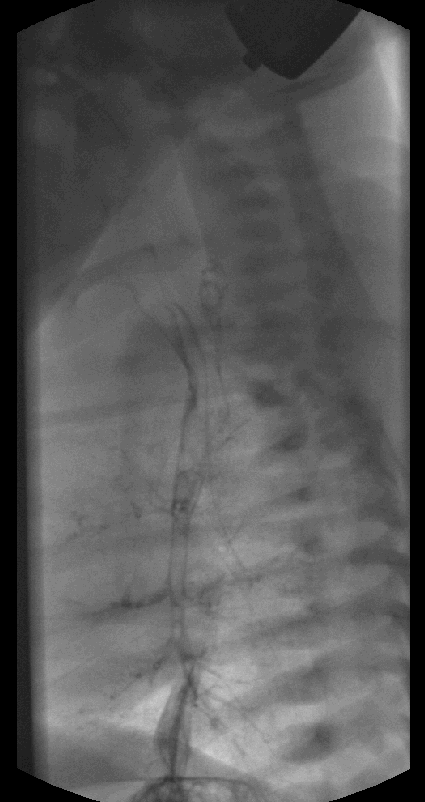History: 4 day old male with coughing with feedings.
Solution: A congenital tracheoesophageal fistula is characterized by failed or incomplete formation of the tubular esophagus or an abnormal communication between the esophagus and the trachea. Occurs rarely (~1:3,000 liver births) and is frequently associated with other anomalies including GI, Cardiac, MSK, GU and chromosomal abnormalities. Usually seen between the upper and lower 1/3rds of the esophagus, just above the carina. They are split into 5 different types based upon whether or not they are associated with esophageal atresia and if so, whether or not the communication is proximal or distal to the area of atresia. In this case, there is no esophageal atresia and this would be categorized as a Type E fistula, or H shaped TE fistula. This is associated with anomalies ~25% of the time and diagnosis is often delayed.


